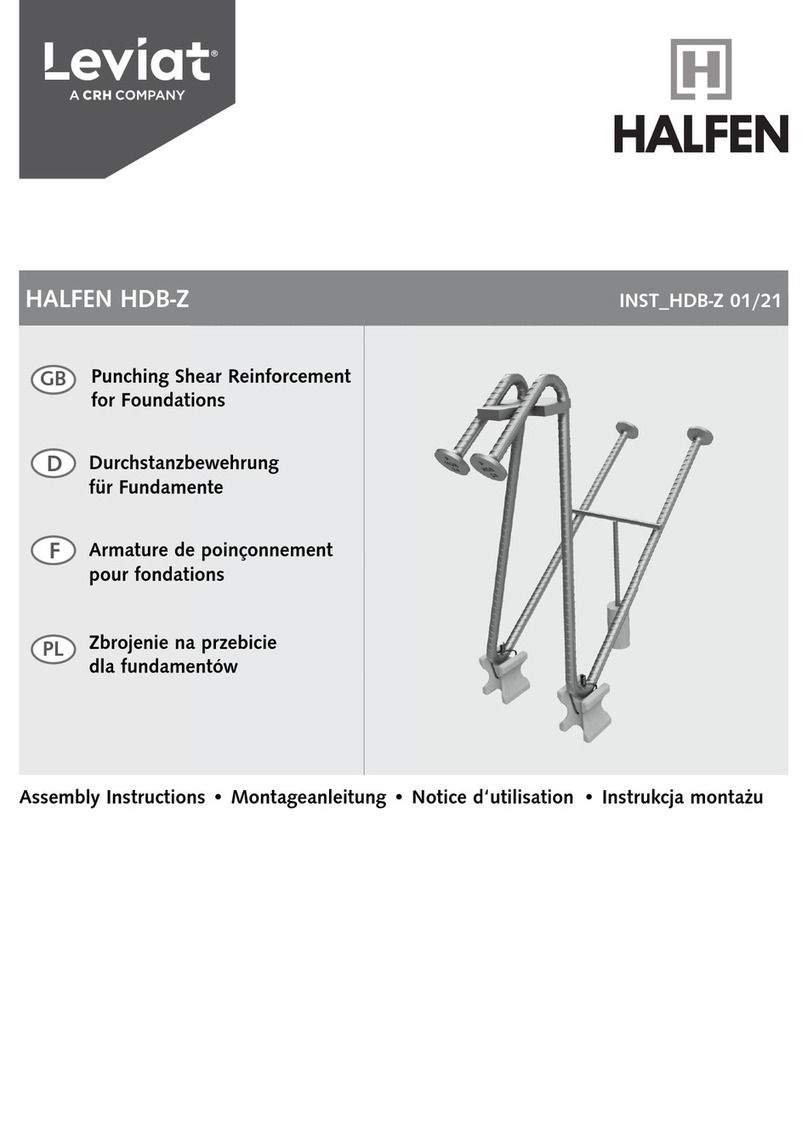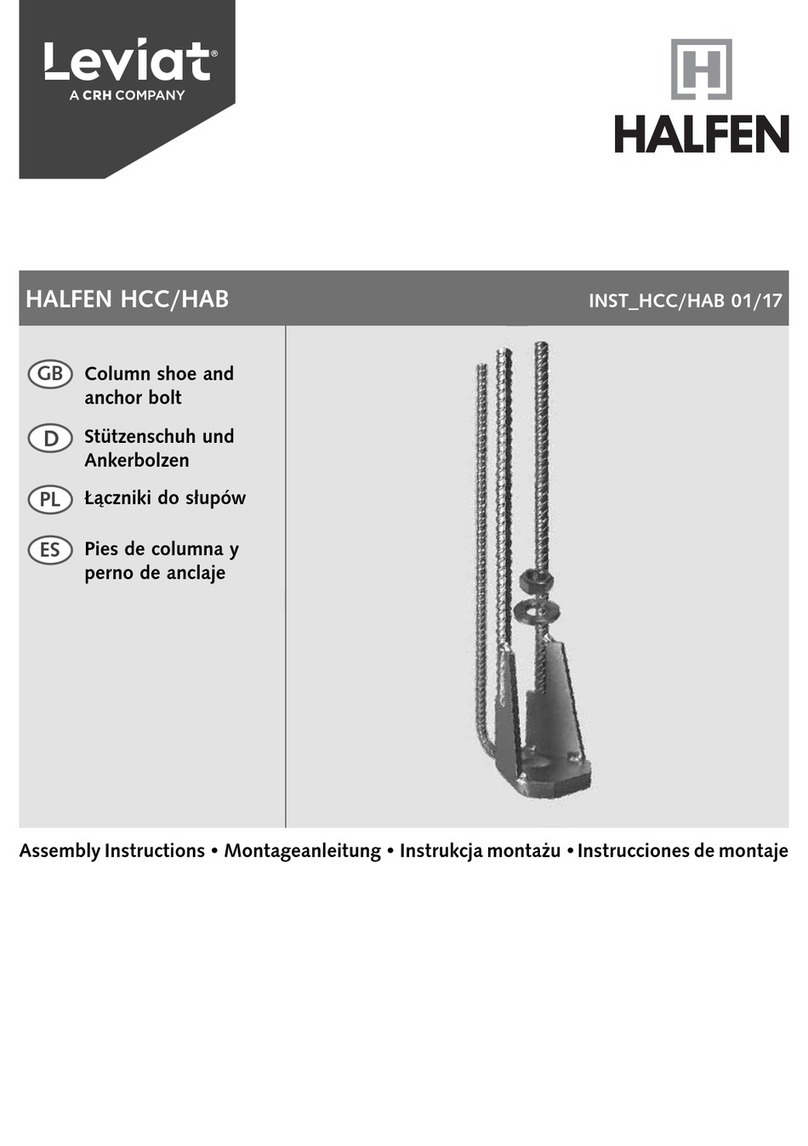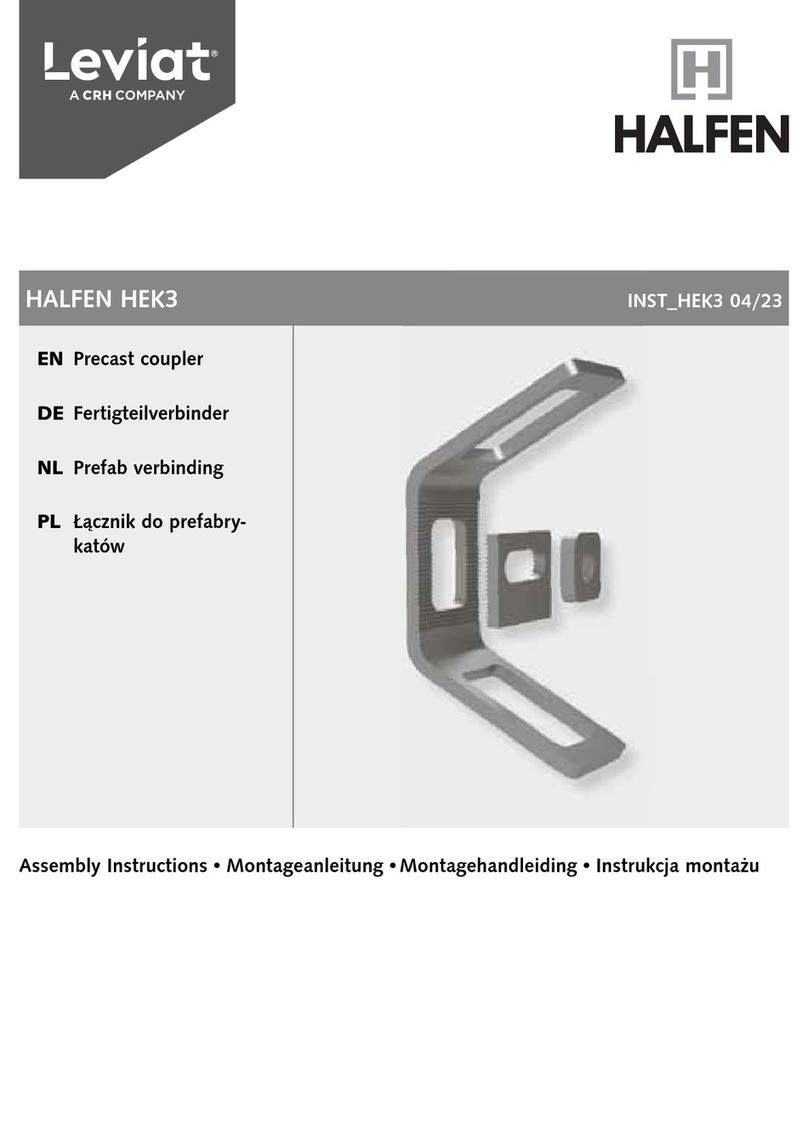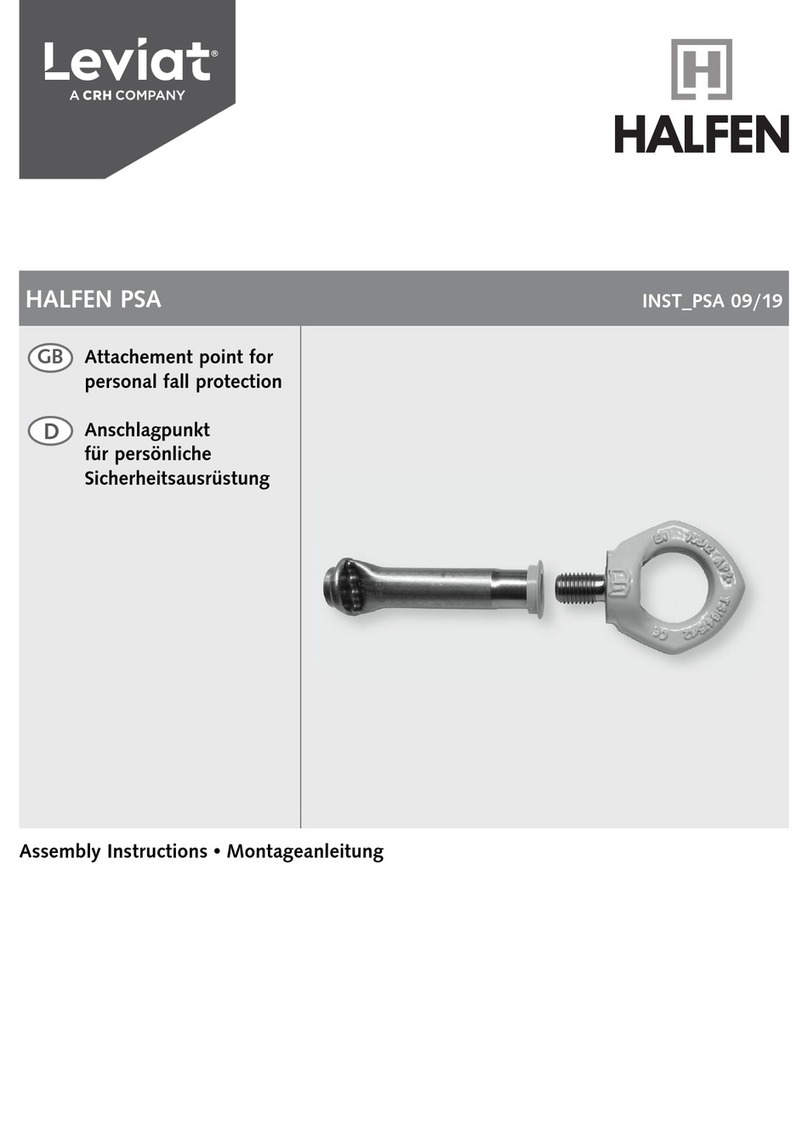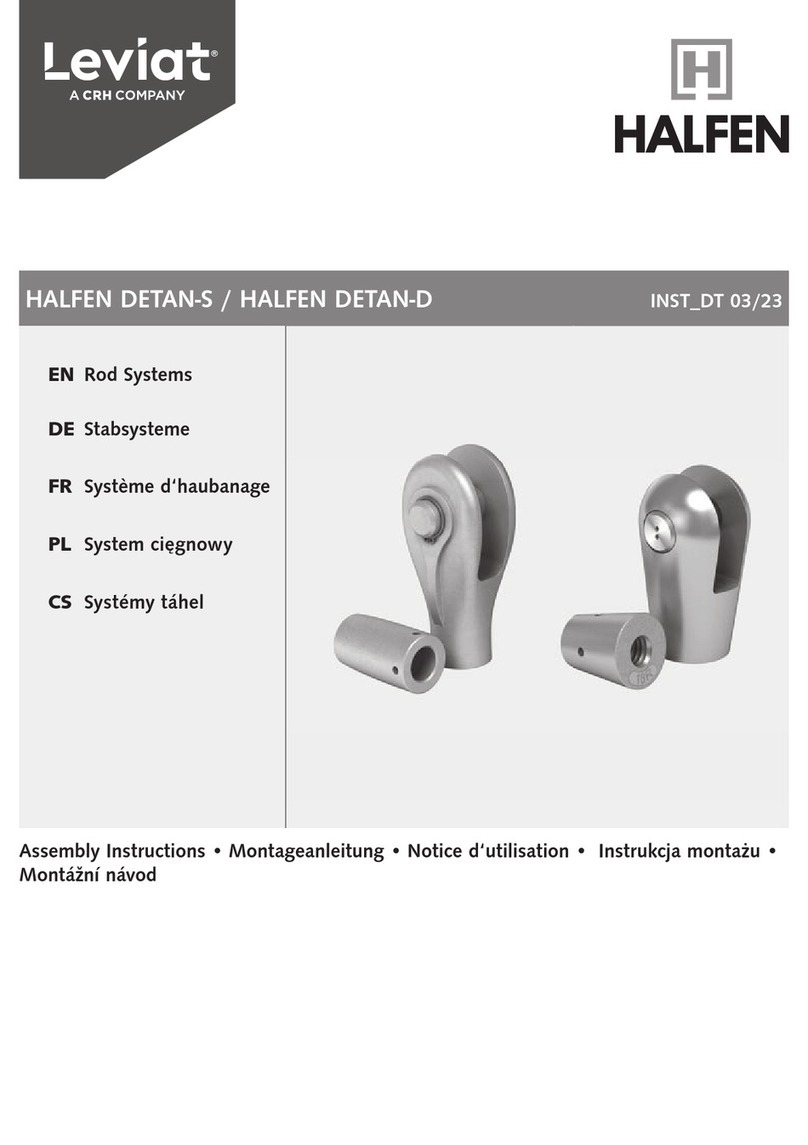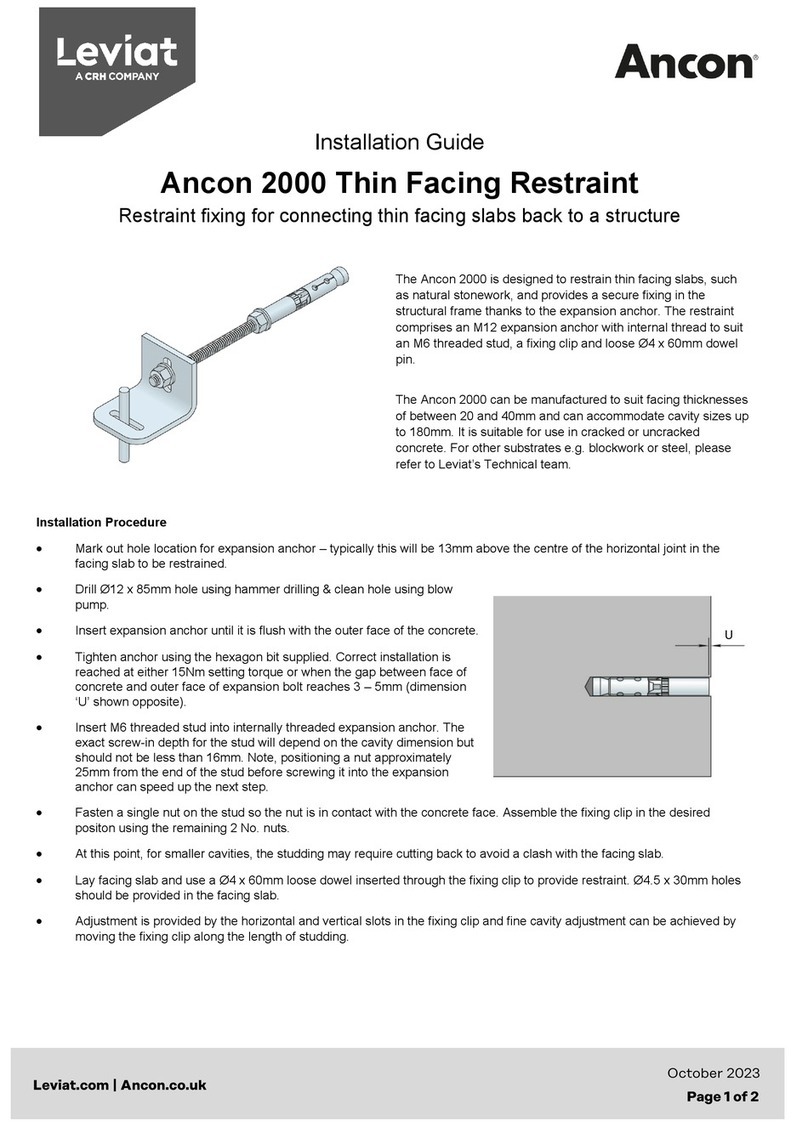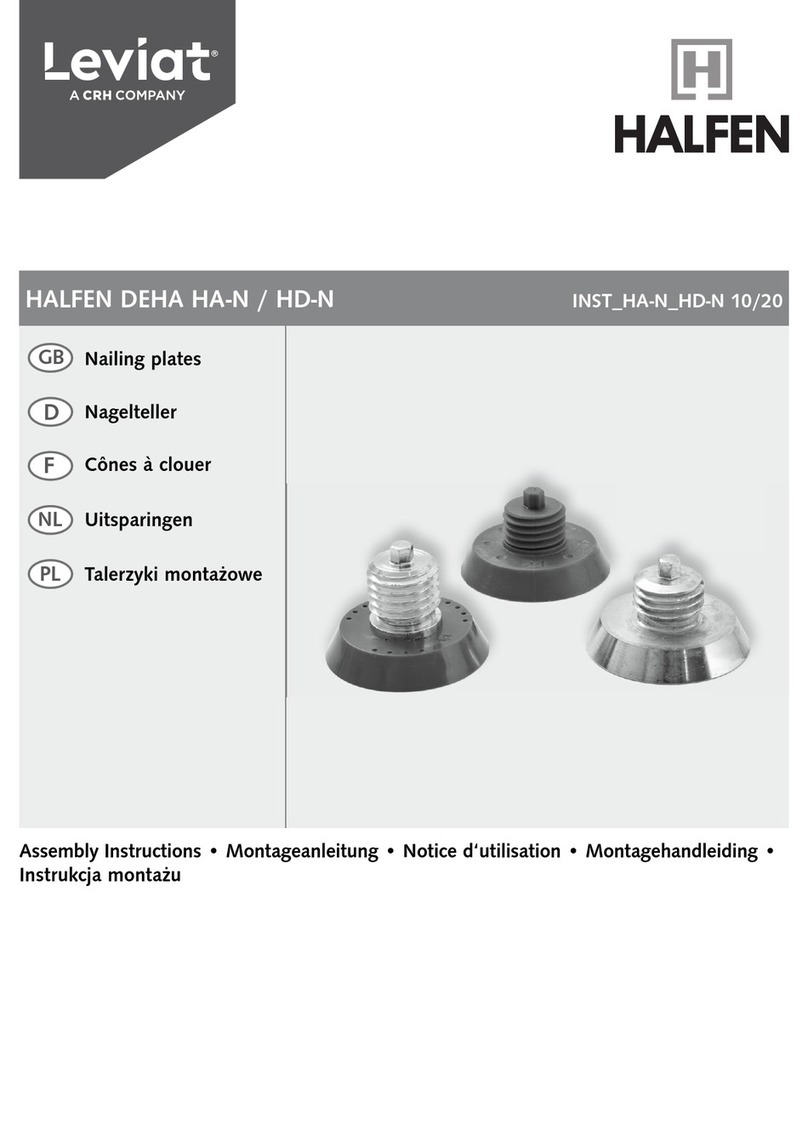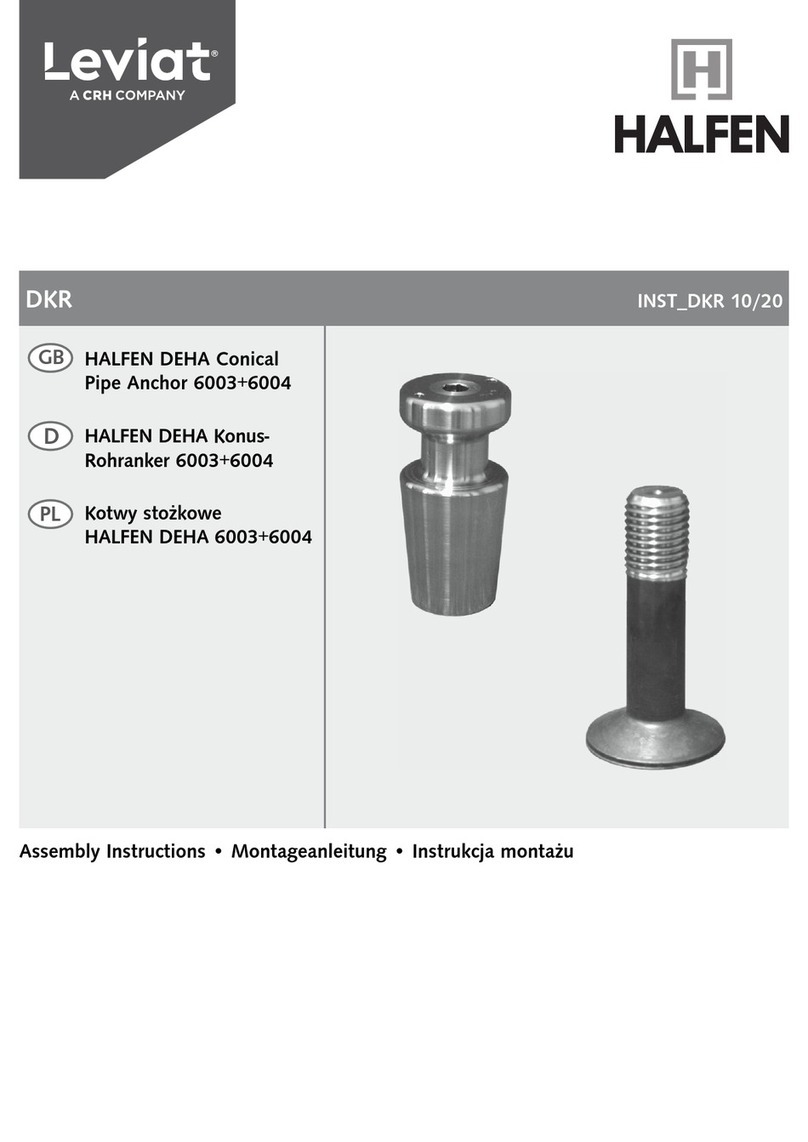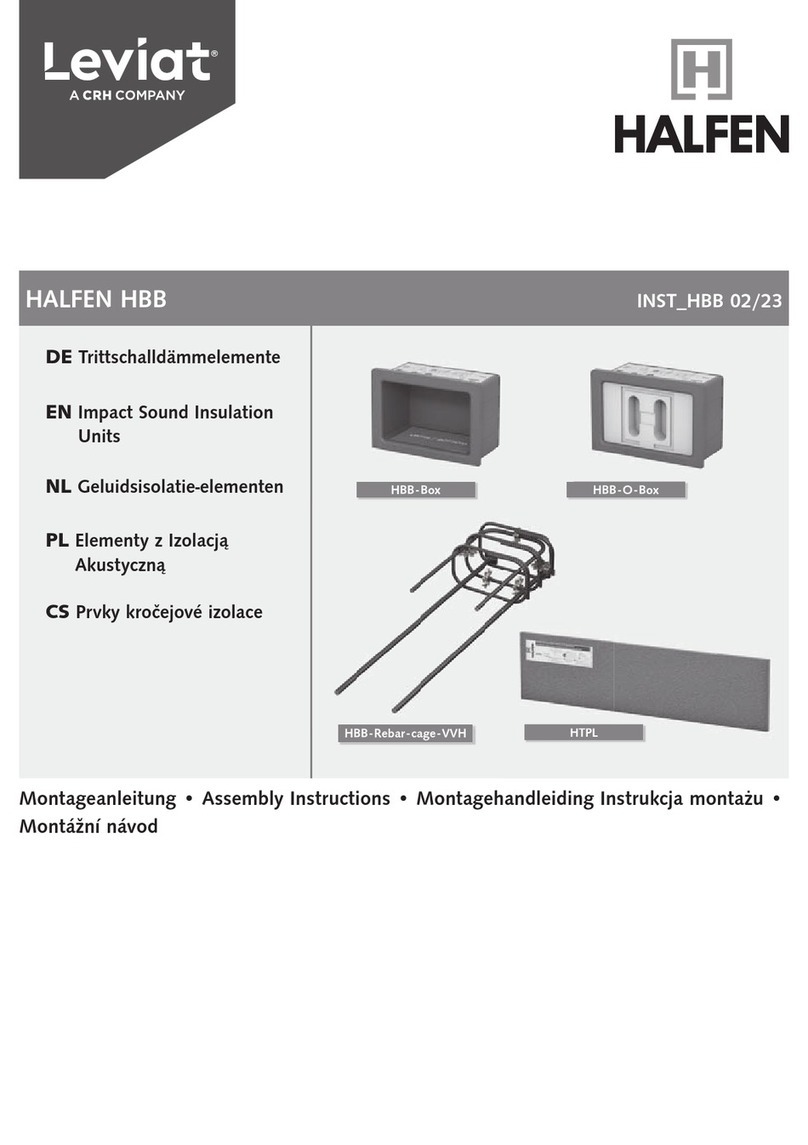
GLASS DRILL INSTRUCTION MANUAL
PRODUCT MANUAL
crlaurence.com
C.R. Laurence Co., Inc. •2503 E. Vernon Ave., Los Angeles, CA 90058 •1.800.421.6144 •crlaurence.com
NOVEMBER 2020
P. 5
1 . SAFETY PRECAUTIONS FOR HOT MELT APPLICATOR EQUIPMENT
This manual contains important safety information and instructions. Failure to comply with these instructions can result in
death, injury or permanent damage to this equipment and will void the warranty.
1.1 Intended Use
This equipment is designed for use with standard adhesive and sealant materials with flash points above 232 °C (450 °F).
Use of flammable material or material not compatible with the specifications of this equipment can cause injury to opera-
tor and damage to equipment.
The manufacturer has designed this equipment for safe operation. Specified models are in compliance with EN 60204-
1:1997. However, heated thermoplastics and other hot melt materials are dangerous and care must be exercised to ensure
operational safety. Handling must be in accordance with hot melt manufacturer specifications. Never exceed the maximum
application temperature recommended by the adhesive manufacturer.
Dispose of hot melt properly. Refer to the Safety Data Sheet (SDS) of the hot melt for recommended disposal methods.
1.2 Personal Safety
Wear the following protection when working on or around this equipment:
Always wear heat resistant gloves rated to 205 °C (400 °F) and allow all system temperatures to stabilize below 193 °C
(380 °F) before servicing. Properly ventilate equipment according to MSDS of equipment.
Trained operators and service technicians should be aware of exposed surfaces of the unit that cannot be practically
safeguarded. These exposed surfaces may be hot and take time to cool after the unit has been operating.
Keep parts of the body away from rotating parts. Do not wear loose articles of clothing when operating or servicing units
with rotating parts. Remove wristwatches, rings, necklaces, or other jewelry and cover or pin up long hair before performing
any work on or with the unit.
Trained operators may perform only external equipment adjustments. Trained service technicians must perform internal
adjustments and service.
1.3 Electrical Safety
Determine voltage of this equipment before installation and confirm compatibility with available power. Equipment must
be connected to a properly grounded circuit and installed in accordance with all applicable electrical codes. Ground fault
protection must be provided in supply circuitry at site installation.
Models designed to EN60204-1: 1997 require power cords be approved to a harmonized (HAR) standard and rated for 70
°C (158 °F). A HAR approved Type B plug and strain relief for power cord are required to meet standard IEC 309. Power
conducting wires must be nominal 5.3 mm2 (10 AWG) maximum and nominal 2.1 mm2 (14 AWG) minimum.
SS96 Hot Melt Unit 19600-135 Rev. B 10/26/00 1
1 Safety Precautions for Hot Melt Applicator Equipment
This manual contains important safety information and instructions.
Failure to comply with these instructions can result in death, injury or
permanent damage to this equipment and will void the warranty.
1.1 Intended Use
This equipment is designed for use with standard adhesive and sealant
materials with flash points above 232 °C (450 °F). Use of flammable
material or material not compatible with the specifications of this
equipment can cause injury to operator and damage to equipment.
The manufacturer has designed this equipment for safe operation.
Specified models are in compliance with EN 60204-1:1997. However,
heated thermoplastics and other hot melt materials are dangerous and
care must be exercised to ensure operational safety. Handling must be in
accordance with hot melt manufacturer specifications. Never exceed the
maximum application temperature recommended by the adhesive
manufacturer.
Dispose of hot melt properly. Refer to the Materials Safety Data Sheet
(MSDS) of the hot melt for recommended disposal methods.
1.2 Personal Safety
Wear the following protection when working on or around this equipment:
Always wear heat resistant gloves rated to 205 °C (400 °F) and allow all
system temperatures to stabilize below 193 °C (380 °F) before servicing.
Properly ventilate equipment according to MSDS of equipment.
Trained operators and service technicians should be aware of exposed
surfaces of the unit that cannot be practically safeguarded. These
exposed surfaces may be hot and take time to cool after the unit has
been operating.
Keep parts of the body away from rotating parts. Do not wear loose
articles of clothing when operating or servicing units with rotating parts.
Remove wristwatches, rings, necklaces, or other jewelry and cover or pin
up long hair before performing any work on or with the unit.
Trained operators may perform only external equipment adjustments.
Trained service technicians must perform internal adjustments and
service.
1.3 Electrical Safety
Determine voltage of this equipment before installation and confirm
compatibility with available power. Equipment must be connected to a
properly grounded circuit and installed in accordance with all applicable
electrical codes. Ground fault protection must be provided in supply
circuitry at site installation.
Models designed to EN60204-1: 1997 require power cords be approved
to a harmonized (HAR) standard and rated for 70 °C (158 °F). A HAR
approved Type B plug and strain relief for power cord are required to
meet standard IEC 309. Power conducting wires must be nominal
5.3 mm2(10 AWG) maximum and nominal 2.1 mm2(14 AWG) minimum.
1.4 Emergency Power Disconnect
In the event of a malfunction, turn off power to the equipment at the
power off switch and remove source power to the system at the nearest
main disconnect.
1.5 Follow Directions
Read the product manual thoroughly before installation, operation or
maintenance. Failure to do so can result in a serious accident or
equipment malfunction. The manufacturer will not be held liable for
injuries or damage caused by misuse of this equipment.
Wear Safety Goggles
Wear Heat-Resistant
Safety Gloves
Wear Protective Clothing
SS96 Hot Melt Unit 19600-135 Rev. B 10/26/00 1
1 Safety Precautions for Hot Melt Applicator Equipment
This manual contains important safety information and instructions.
Failure to comply with these instructions can result in death, injury or
permanent damage to this equipment and will void the warranty.
1.1 Intended Use
This equipment is designed for use with standard adhesive and sealant
materials with flash points above 232 °C (450 °F). Use of flammable
material or material not compatible with the specifications of this
equipment can cause injury to operator and damage to equipment.
The manufacturer has designed this equipment for safe operation.
Specified models are in compliance with EN 60204-1:1997. However,
heated thermoplastics and other hot melt materials are dangerous and
care must be exercised to ensure operational safety. Handling must be in
accordance with hot melt manufacturer specifications. Never exceed the
maximum application temperature recommended by the adhesive
manufacturer.
Dispose of hot melt properly. Refer to the Materials Safety Data Sheet
(MSDS) of the hot melt for recommended disposal methods.
1.2 Personal Safety
Wear the following protection when working on or around this equipment:
Always wear heat resistant gloves rated to 205 °C (400 °F) and allow all
system temperatures to stabilize below 193 °C (380 °F) before servicing.
Properly ventilate equipment according to MSDS of equipment.
Trained operators and service technicians should be aware of exposed
surfaces of the unit that cannot be practically safeguarded. These
exposed surfaces may be hot and take time to cool after the unit has
been operating.
Keep parts of the body away from rotating parts. Do not wear loose
articles of clothing when operating or servicing units with rotating parts.
Remove wristwatches, rings, necklaces, or other jewelry and cover or pin
up long hair before performing any work on or with the unit.
Trained operators may perform only external equipment adjustments.
Trained service technicians must perform internal adjustments and
service.
1.3 Electrical Safety
Determine voltage of this equipment before installation and confirm
compatibility with available power. Equipment must be connected to a
properly grounded circuit and installed in accordance with all applicable
electrical codes. Ground fault protection must be provided in supply
circuitry at site installation.
Models designed to EN60204-1: 1997 require power cords be approved
to a harmonized (HAR) standard and rated for 70 °C (158 °F). A HAR
approved Type B plug and strain relief for power cord are required to
meet standard IEC 309. Power conducting wires must be nominal
5.3 mm2(10 AWG) maximum and nominal 2.1 mm2(14 AWG) minimum.
1.4 Emergency Power Disconnect
In the event of a malfunction, turn off power to the equipment at the
power off switch and remove source power to the system at the nearest
main disconnect.
1.5 Follow Directions
Read the product manual thoroughly before installation, operation or
maintenance. Failure to do so can result in a serious accident or
equipment malfunction. The manufacturer will not be held liable for
injuries or damage caused by misuse of this equipment.
Wear Safety Goggles
Wear Heat-Resistant
Safety Gloves
Wear Protective Clothing
SS96 Hot Melt Unit 19600-135 Rev. B 10/26/00 1
1 Safety Precautions for Hot Melt Applicator Equipment
This manual contains important safety information and instructions.
Failure to comply with these instructions can result in death, injury or
permanent damage to this equipment and will void the warranty.
1.1 Intended Use
This equipment is designed for use with standard adhesive and sealant
materials with flash points above 232 °C (450 °F). Use of flammable
material or material not compatible with the specifications of this
equipment can cause injury to operator and damage to equipment.
The manufacturer has designed this equipment for safe operation.
Specified models are in compliance with EN 60204-1:1997. However,
heated thermoplastics and other hot melt materials are dangerous and
care must be exercised to ensure operational safety. Handling must be in
accordance with hot melt manufacturer specifications. Never exceed the
maximum application temperature recommended by the adhesive
manufacturer.
Dispose of hot melt properly. Refer to the Materials Safety Data Sheet
(MSDS) of the hot melt for recommended disposal methods.
1.2 Personal Safety
Wear the following protection when working on or around this equipment:
Always wear heat resistant gloves rated to 205 °C (400 °F) and allow all
system temperatures to stabilize below 193 °C (380 °F) before servicing.
Properly ventilate equipment according to MSDS of equipment.
Trained operators and service technicians should be aware of exposed
surfaces of the unit that cannot be practically safeguarded. These
exposed surfaces may be hot and take time to cool after the unit has
been operating.
Keep parts of the body away from rotating parts. Do not wear loose
articles of clothing when operating or servicing units with rotating parts.
Remove wristwatches, rings, necklaces, or other jewelry and cover or pin
up long hair before performing any work on or with the unit.
Trained operators may perform only external equipment adjustments.
Trained service technicians must perform internal adjustments and
service.
1.3 Electrical Safety
Determine voltage of this equipment before installation and confirm
compatibility with available power. Equipment must be connected to a
properly grounded circuit and installed in accordance with all applicable
electrical codes. Ground fault protection must be provided in supply
circuitry at site installation.
Models designed to EN60204-1: 1997 require power cords be approved
to a harmonized (HAR) standard and rated for 70 °C (158 °F). A HAR
approved Type B plug and strain relief for power cord are required to
meet standard IEC 309. Power conducting wires must be nominal
5.3 mm2(10 AWG) maximum and nominal 2.1 mm2(14 AWG) minimum.
1.4 Emergency Power Disconnect
In the event of a malfunction, turn off power to the equipment at the
power off switch and remove source power to the system at the nearest
main disconnect.
1.5 Follow Directions
Read the product manual thoroughly before installation, operation or
maintenance. Failure to do so can result in a serious accident or
equipment malfunction. The manufacturer will not be held liable for
injuries or damage caused by misuse of this equipment.
Wear Safety Goggles
Wear Heat-Resistant
Safety Gloves
Wear Protective Clothing
